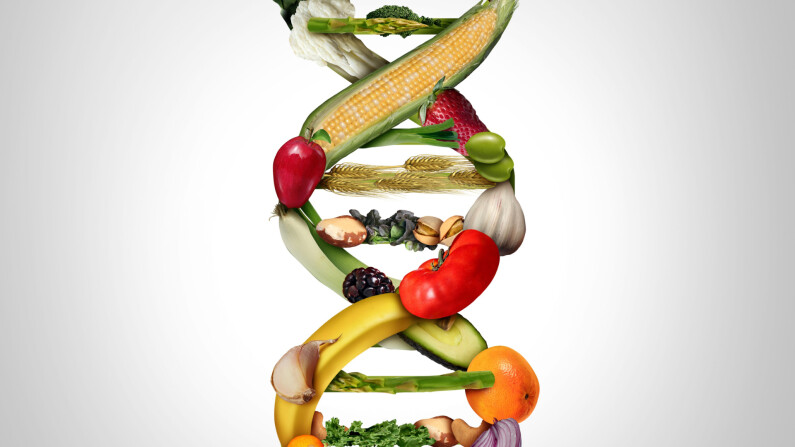What, in your opinion, do our food preferences depend on? Why are we happy we eat certain foods 24/7, while others make us nauseous or just taste too spicy, salty, or sour?
You may think that this due to our upbringing as well as the cultural and living environment in which we grew up. Yes, it is true – they do shape our taste perception, but the world around us isn't the only thing that has something to do with it! For example, scientists have established that our food preferences depend on our genes. Let us explore the role the genetic code plays in the human taste perception and why it is so.
Tastes differ – how our perception is shaped

Taste and a sense of smell that complements it are among the most ancient of all senses, which the early cell organisms had as early as a billion years ago. Later on, it was the taste buds that triggered an evolution, since they were the only chance for mammals to survive and win in the struggle for existence. Thus, taste and smell helped animals to smell approaching prey and to understand which fruits and sweet plants they could it and which bitter ones were poisonous. The same applies to the carnivores: since raw meat spoils quickly, its rotten taste and smell alerted animals to the danger of poisoning.
So, the ability to sense taste was, in fact, a matter of life and death for our ancestors as well. Later on, the regions people lived in, the conditions and the nature’s features, as well as the foods available there continued to shape people's taste preferences. For example, the people of present-day Latin America – Argentina, Mexico and Brazil – prefer spicy dishes. Peruvian, Cuban and Chilean cuisine – even desserts – are also spicy. Research suggests that this predilection for a spicy taste emerged because those territories are considered the birthplace of chili pepper. Even today, it is not just an ingredient in most recipes, but it is also served as a separate dish.
Meanwhile, Oriental countries focus on various spices and condiments, made from all kinds of fragrant herbs, roots and even tree bark. Not a single dish in Asia or India is ever served without Oriental spices, which give dishes a special and, I must say, peculiar taste the people of Central Europe are unaccustomed to.
But the northern countries’ inhabitants prefer highly fatty foods, because the life in such cold regions is very energy-intensive. And the substances fried meat, for example, contains help them replenish it.
So, national food preferences have been formed over centuries of society’s development and the advance of civilization. However, even those who live in the identical cultural environment and seem to have similar food habits can still sense flavors differently. For different people, the same food will differ in taste intensity, smell, and perhaps even consistency. So, these food perception criteria are influenced by one’s genetic code, as well as our personal preferences.
What genes influence our food preferences

Many recent studies, such as Genetic and Environmental Influences of Dietary Indices in a UK Female Twin Cohort, suggest, that food likes and dislikes are linked to an individual’s certain genes. First, let's look at what genes are.
Genes are small sections of a DNA molecule. Their exact number in the human body is still unknown. There may be tens of thousands of genes. There are so many of them because one gene can have several variations, which are called alleles. That is, there can be a lot of alleles – gene variations.
For example, the research Regulation of FAT/CD36 gene expression: further evidence in support of a role of the protein in fatty acid binding/transport suggests that a CD36 (short for the Cluster of differentiation) gene variation is responsible for people's cravings for fatty foods. Their increased amount in the body causes taste buds to respond significantly more actively to fatty foods. The CD36 gene can be found not only in our body cells but also in the taste buds on the tongue surface. So it becomes a full-fledged receptor and allows to taste fat more intensely. CD36 is also often found in the innate immune system of man.
Meanwhile, Norwegian scientists have established why many people can't stand the taste of meat. It is not only because of the cultural traditions or religious prohibitions, but because of the OR7D4 gene (Olfactory receptor), which causes an unpleasant taste of meat.
For people with this gene the most disgusting is the pork meat aroma, more specifically, the smell of androsterone hormone, produced by male pigs during puberty. However, in order to experience such a distinct aversion to meat products, there should be a much bigger amount of the OR7D4 gene variation, which is quite rare.
People who have particularly high TAS2R38 (Taste 2 Receptor Member 38) gene amount prefer salty foods. Some researchers claim that this gene variation in fact enhances salty taste. However, other researchers believe that the increased amount of TAS2R38 does not indicate a liking of foods with higher salt content, but rather that people with this gene variations try to drown out the bitter taste of other foods by salty ones. For example, broccoli with a higher TAS2R38 amount tastes bitter in the mouth, which is why many people forego vegetables in favor of less healthy foods they perceive as tastier ones. Some people try to get rid of the bitterness by eating something sweet, thus creating certain eating habits as well.
By the way, not only a liking for salty or bitter taste of broccoli enables to detect increased TAS2R38 amounts. The same gene causes bitter sense of coffee that people feel.
Perception of sweets and fast carbohydrates depends on the mutation of the GLUT2 (Glucose transporter) gene. If its performance is disrupted or GLUT2 does not function properly, then the central nervous system reacts to increased glucose levels in blood, and therefore a person eats too many sweets. In addition, GLUT2 transports not only glucose but fructose as well.
Though the following theory has been tested only on rodents, scientists boldly declare that genes also influence people's cravings for sour products. The OTOP1 gene (Otopetrin) and its variations are responsible for this. The mammals that had the properly functioning gene with its amount within the norm, reacted sharply to sour foods. That is, even normal amounts of the gene variations can cause painful sensations in the taste buds. And the animals in which OTOP1 was absent or malfunctioned did not actually sense sour taste. However, sensitivity to sour taste very rarely disappears completely: a faint sour taste can be sensed even when the gene is absent.
We are used to the idea that genetics is something far removed from ordinary life and is not manifest at all in everyday life. But numerous scientific studies prove that sometimes genetics determines even our daily lives! Maybe you will think over what your predominant food preferences are driven by your genes, and will be able to adjust your diet. In any case, excessive consumption of sweet, salty and fatty foods, as well as coffee has an adverse effect on the body. So you can try to "cheat" your genetics by controlling your eating habits and consciously accustom your body to healthy food.
Share this with your friends!






Be the first to comment
Please log in to comment